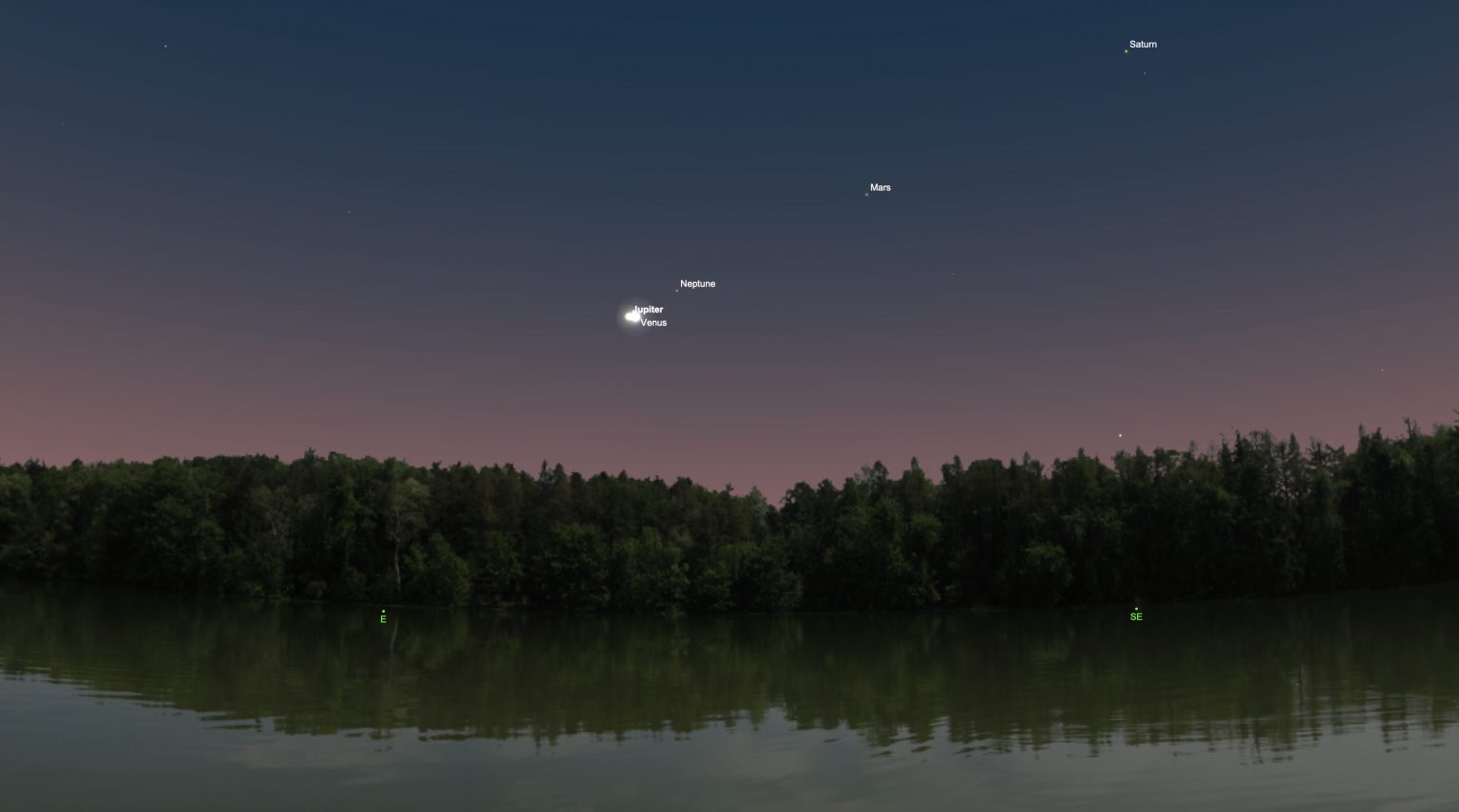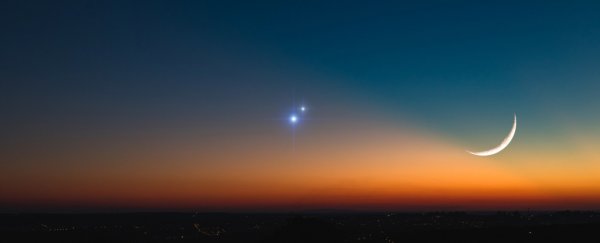Early risers this month have been treated to an incredible and rare spectacle – the almost perfect alignment of four planets in the night sky.
But it's not over yet! In the early hours of 30 April 2022, we'll have the chance to see Venus and Jupiter 'nearly collide' as they appear to move incredibly close together from our vantage point.
In fact, the two planets will get so close in the night sky that they'll seem to merge into one giant, glowing mass to the naked eye, according to NASA.
 (NASA/Marshall)
(NASA/Marshall)
Above: Illustration of the sky looking east from Huntsville, Alabama, at 6:00 am on April 30, local time.
Those with binoculars or a telescope will be able to make out the two objects more distinctly. The planets will be 0.2 degrees apart at their closest approach – a little less than the angular distance of a full moon.
The spectacle will be visible again in the dawn hours of May 1, but the position of the planets will be reversed.
Of course, the planets aren't actually close to each other at all – their orbits will simply appear to line up from our view of the night sky here on Earth.
In reality, the planets will be 430 million miles (690 million km) apart – more than four times the distance between the Earth and the Sun.
(If anything actually got close enough to 'nearly collide' with Jupiter it would more than likely be pulled into the gas giant's orbit along with its 79 known moons – the largest of which is bigger than Mercury.)
This apparent 'merging' of Venus and Jupiter is the second conjunction we've seen this month, after Mars and Saturn lined up at the start of April.
However, neither of these two conjunctions rival the 'Great Conjunction' between Saturn and Venus that we witnessed at the end of 2020.
But according to the "What's Up" April skywatching tips from NASA's Jet Propulsion Laboratory, the April 30 meeting is still an "ultra close" conjunction that's worth waking up early for.

How to see the conjunction
Just like the planetary alignment of Venus, Jupiter, Mars, and Saturn we saw this past week, to view the conjunction between Venus and Jupiter, you'll need to wake up early.
The two planets will be most visible in the hour before dawn, looking towards the east.
According to EarthSky.org, Venus will be at magnitude -4, and Jupiter will be shining at magnitude -2.1. The full moon, by comparison, shines at -12.7. (But the event coincides with a new moon, so it will hardly be visible.)
For those who can't get enough of tracking our changing view of the Solar System, we have good news. There's an even bigger alignment in store this year.
On June 24, all of the other planets of the Solar System – Mercury, Venus, Mars, Jupiter, Saturn, Neptune, and Uranus – will join together in an even grander planetary alignment, although you'll probably need a telescope to see Neptune and Uranus.
The alignment will also stretch out over a greater section of the sky, making it harder to discern or photograph.
Despite these challenges, major planetary alignments like this one, visible to the human eye, are very, very rare, and have only occurred three times since 2005, so you don't want to miss it.
Partial solar eclipse on 30 April 2022
If you're not too keen on waking up early or venturing outside to skywatch, never fear. There's also a partial solar eclipse happening this week, at the same time as the conjunction.
This occurs when the Moon passes between us and the Sun, partly obscuring the Sun's light from view. In this partial solar eclipse, a maximum of 64 percent of the Sun's disk will be obscured.
The event will only be visible to those in parts of Antarctica, South America, and the Pacific and Atlantic oceans. But you should be able to watch it from the comfort of your own home from wherever you are in the world, thanks to a livestream set to be hosted by India-based space YouTube channel Gyaan ki gareebi.

There's nothing quite like observing the movements of our Solar System neighbors to put things into perspective and remind us that we're all really just moving around space on a big, water-laden rock. Enjoy!
